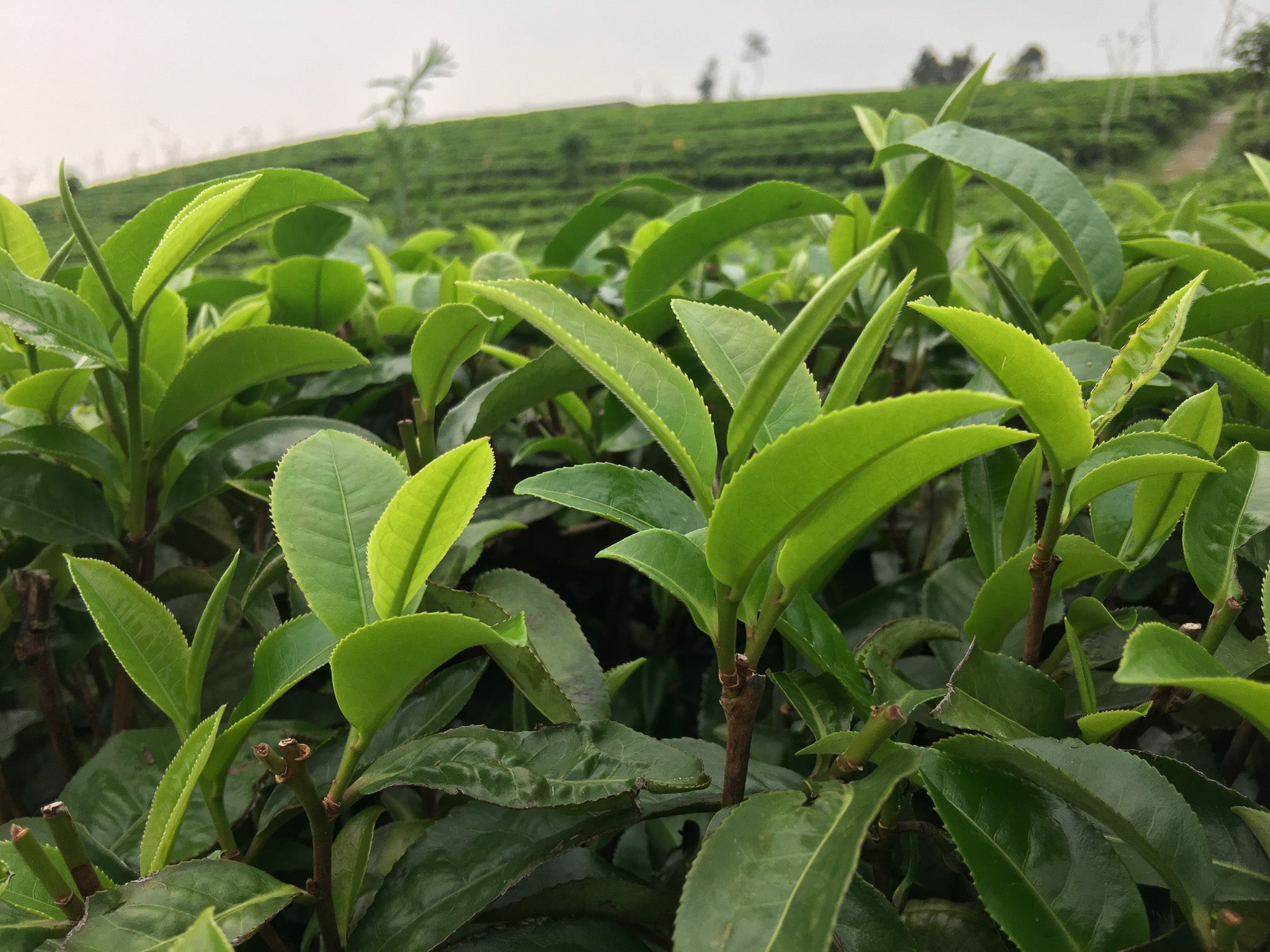
What are the Best Leaves?
When we talk about the leaves of the tea tree, perhaps these questions will naturally arise in your mind: how did tea come about? Who discovered tea first ? When did tea come into existence? To understand these tea leaves, we may need to take a bit of time to review the Chinese history of tea in ancient China. Shennong, who was the first emperor during the period of the New Stone Age in ancient China (Emperor Yandi), not only developed the use of herbs to cure diseases, but also invented agricultural tools and taught people to cultivate wasteland to grow crops.
According to legend, tea has been passed down in China for about 5000 years. It is said that in a book from the earliest dynasties of the Eastern Han Dynasty [Shennong’s Classic of the Materia Medica] recorded an incident: one day Shengnong had tasted more than a hundred herbs and was struck by many poisons. His mouth and tongue became numb and he went into a trance. He sat down under a big tree and rested with his back against the tree. Suddenly, a fresh wind blew over him and he smelled a breath of fresh air. He looked up at the dense green leaves on the tree and picked a few leaves, put them into his mouth to chew. The taste of the leaves was bitter at first, but slowly became sweet and fragrant, and the numbness of Shennong's mouth and tongue gradually returned to normal. The poison in Shennong's body was also relieved. Therefore, Shennong named the leaves “TU”. “TU” is the earliest name of "tea". Tea first appeared in the world in the form of medicine.
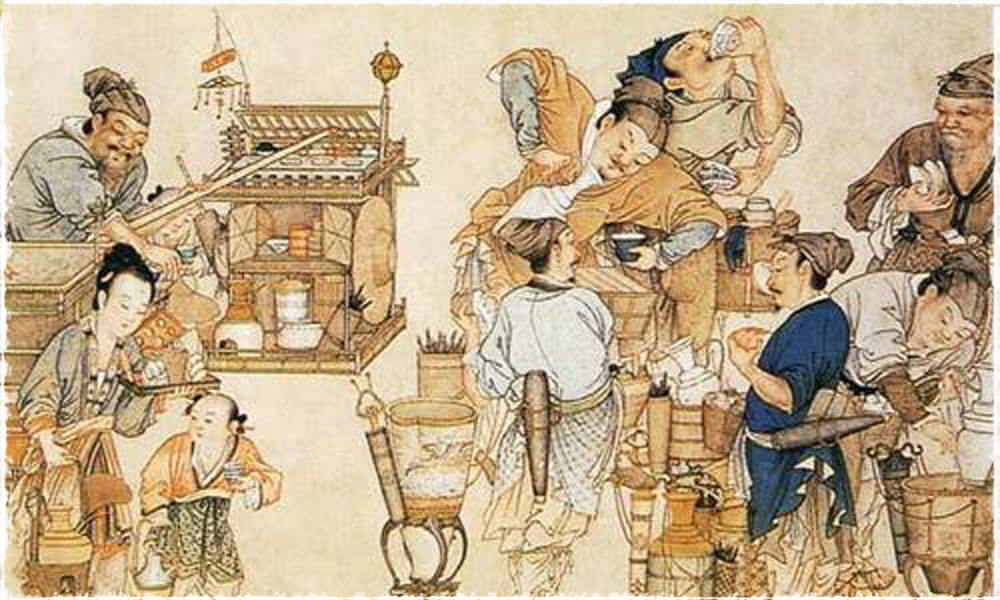
The Evolution of Tea in China
People at first ate fresh tea leaves (chewed in the mouth) as medicinal herbs to clear poison from their bodies.
Shortly afterwards, tea developed into a soup made from raw tea leaves. People also roasted tea leaves or boiled tea leaves with water.
During the Han Dynasty, tea was boiled for drinking and people also made congee with tea.
In the Sui and Tang dynasties, tea became popular in the form of steamed green tea cakes.
It was not until the Tang Dynasty that people began to make dried tea leaves. Lu Yu, who wrote the first tea book called “Tea Classic of Tea”, is considered the “ Tea immortal” and the “God of Tea”. His book elaborated on the theory of tea, the method of tea production, and tea decoction..
Some people prefer Puerh tea, some like green tea, Taiwanese love oolong tea, and westerners love black tea. Regardless of the type of tea you love, they all originate from one type of tea tree, Camellia sinensis, which is a member of the Camellia genus in the family Camelliaceae. Although there are more than a hundred species of plants in the genus Camellia, only two species are currently used to make tea: the Assam species (Camellia sinensis var. assamica) and the Chinese species (Camellia sinensis var. sinensis). These tea trees have gone through thousands of years of evolutions, reproduction and crossbreeding, or have been taken to different places to be cultivated or even bred; and under different climatic, geographical, and human factors, they have developed different flavors of tea (not tea varieties). For example, there are famous teas named after tea tree species; Yunnan Pu'er tea, Indian Assam black tea, Fujian Tieguanyin oolong tea, Taiwan Oriental Beauty oolong tea, Zhejiang Longjing tea and so on.
Which leaf on the tea tree makes the best and most flavorful tea?
In the tea industry, we often say that tea has three lives. The “first birth” is the life given by nature, slowly taking root and sprouting from the ground until it grows into leaves, and then being plucked by people, which becomes the “first death”.
The second life of the tea leaves is given by the tea maker. To make tea, we need to choose the most suitable weather, time, and the best processing skills to maximize the advantages of each kind of tea. As the saying goes: “Heaven, Earth, People, and Harmony.” have to work well altogether for making the best teas. After all the tea leaves have been made into real tea that we can drink, those dried tea leaves changed into a nice shapes with nice colours and the aroma of the teas as if the tea leaves are “reborn”!
The third life of the tea leaves is given by the tea artisan (the brewer). A good tea artisan knows how to choose the right tea ware and water for brewing different kinds of tea. We often say: “The tea ware is like a father, the water is like a mother”. It means that the choice of tea ware and water is significant when making tea. After brewing a good pot of tea, someone who knows how to appreciate tea, will fully understand all the advantages of tea perfectly. This is the third “rebirth” of tea. In tropical regions, the majority of tea trees are Arbor type tea trees. For example, the tea trees reach 15-30 meters high in Yunnan, China. Cultivated tea trees have to be pruned to suppress their growth and height, which is usually controlled between 0.8-1.2 meters.
Depending on its local climate, it takes about 20-60 days for the leaves from a pruned tea tree to be ready for harvest.
Although the life of tea leaves do not last very long on the trees , people can use these leaves to make different flavors of tea and share them with countless people, so that they can have better health. Perhaps this is a kind of contribution and cultivation that the tea tree has made for human beings! In fact, the growth period of leaves on a tea tree is just like the entire life of a human being: from sprouting, growing, declining, aging, to falling leaves. In the end, they will return to their roots.

1- Sprouts (BUDS)
When the tea tree has concentrated enough nutrients, a new bud grows slowly on the top of the tea tree. The first bud is like a newly born child. This little bud is the most nutritious, with the highest amino acid content; it is full of hairs(pekoe). The more hairs(pekoe) there are, the more amino acids it contains.
Secondly, it also serves as a ‘cloak’ (pekoe) for its own shoots, acting as a shield from the fierce sun, to prevent being burned. The small buds are usually processed to produce a white-colored tea. That’s why we call these hair of buds 'White Hair (pekoe)'.
Our tea: Tea Yunnan Moonlight Buds.
The flavor of these hairy buds is light and sweet, due to the fact that it contains less tannins and more amino acids.
2- The first Leaf
The first leaf of the tea tree is what I have named “the half bud and half leaf” because it is very tender. After the new bud grows out, the first leaf is not fully grown like a regular leaf. In order to pursue high-quality tea, some teas require tender plucking when the first leaf is half leaf, much like a young child.
Our tea: Tea Yunnan Supreme (Green Tea 1 bud with 1 leaf).
If you don't pick the leaves when they form as half buds and half leaves, generally speaking, the first leaf will be like a growing teenager. This is because of their slow photosynthesizing, the leaves will turn into a darker green color with fewer hairs than when they are young buds.
The amino acids will also be reduced at the same time, while the catechins and polyphenols will gradually increase. The flavor of the tea is thicker and stronger than that of the unique young buds.
3- The 2nd and 3rd leaves
At this time, the 2nd and 3rd leaves are like young adults aged 25-40. The leaves have really matured. The pekoe (hairs) on the leaves are almost all gone, just like some people who have experienced some social vicissitudes, they have their own opinions, ideas, and have become stable and mature. The leaves are well-balanced in nutrients such as tea polysaccharide and polyphenols. They are best for making oolong teas with 1 buds and 2 to 3 leaves.
Our teas:
1) Taiwan Oriental Beauty Oolong Tea (1bud with 1-2 leaves).
2) Tea Taiwan Sunrise Oolong Tea (1 bud with 1-2 leaves).
Tea Taste: Stronger aroma, slightly bitter and sweet.
3- The 4th and 5th Leaves
The leaves are now in a middle-aged or even older stage, like an old man over 50 years old, who is harmonious and uncontroversial in the world. At this stage, the leaves are high in polyphenols and tannins, which are not suitable for high-grade teas. Taste: The prominent environmental flavor is accompanied by a strong sense of bitterness and astringency in taste.
The aroma is obvious and the overall taste is not balanced.
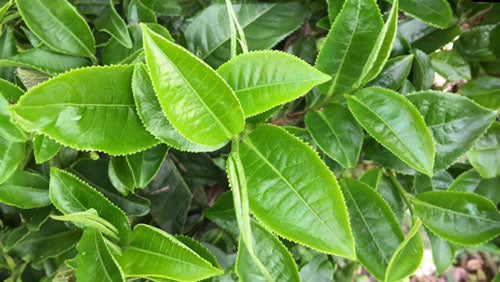
the flavour of tea varies depending on the harvesting season
The season in which the tea is harvested, has a critical impact on the quality and flavor. In our tea gardens, there are only three harvesting seasons in a year: spring, summer, and autumn. We name our batches of tea according to the season: Spring Tea, Summer Tea, and Autumn Tea. We do not harvest in winter so that the tea trees can hibernate and store enough nutrients and energy, waiting for the next spring to grow high-quality tea leaves. Winter is not a good season for making tea because of the cold weather.
Tea leaves picked in March-April are called "Spring Tea".
Tea leaves picked between May and July are called "Summer Tea". Tea leaves picked from August to October are called "Autumn Tea".
Fresh tea leaves harvested in spring are undoubtedly the best after a long winter hibernation. The tea tree has stored and absorbed sufficient nutrients and energy, waiting for the spring to come. The sturdy shoots will be vigorously stretched out, and the fresh leaves are extremely rich in internal substances. The leaves are thick, soft and mostly dark green in color with a rich flavor and high aroma.
When we harvest in the spring, we divide the leaves into three periods, which are called "three emerald green pickings", referring to the tea leaves picked before the spring equinox, before the Qingming Festival, and before the rainy season. The fresh leaves picked during these three periods are the most tender and of the highest quality.
The term "Mingqian tea" refers to the spring tea made from the fresh leaves picked before the Qingming Festival in the Jiangnan tea regions of China.
The term "Yuqian tea" refers to the tea leaves picked after the Qingming Festival and before the rainy season in the Jiangnan tea regions of China. "Mingqian tea" is mainly used for green tea and some black teas, while the terms "Mingqian tea" and "Yuqian tea" do not exist for some Oolong and Puerh teas.
The quality of fresh leaves harvested in summer is slightly lower than that of the Spring Tea because of the high temperature in summer. The buds and leaves grow faster, and the fresh leaves contain relatively fewer substances compared with Spring Tea. The aroma is lower, and the flavor is also thinner. The quality of green tea, in particular, is the easiest way to recognize the differences between Spring Tea and Summer Tea. However, summer black tea grade is the best. The sunshine in summer is stronger, and the polyphenol content is higher, making it favorable for the fermentation of black tea. Another special tea, Taiwan Oriental Beauty Oolong Tea, has a fermentation level close to black tea. This type of tea tree usually attract small green leafhoppers in summer. Therefore, these teas are the best quality teas made in summer.
Autumn tea has a shorter growing period than spring tea, and the accumulation of fresh leaf contents is relatively small, resulting in a lesser aroma and flavor. The quality of autumn tea is between spring and summer, with leaf flesh and quality similar to that of summer tea, with thick and loose strands. If the climate is characterized by high temperature and little rain, the water balance of the tea tree is disrupted, leading to obvious shortening of tea buds.

HAND-PICKING Tea Leaves : A MUST
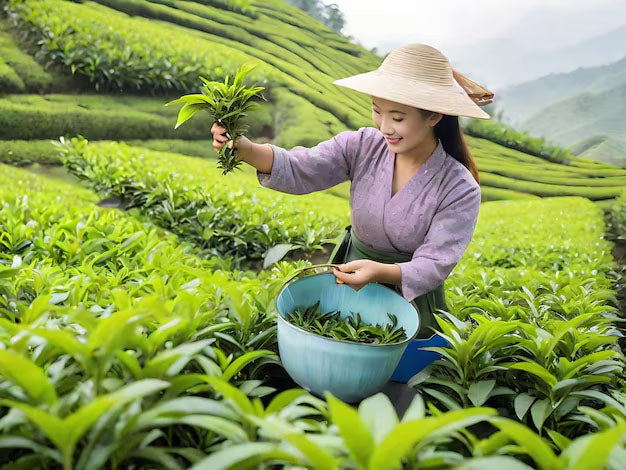
The quality of tea leaves depends on many different factors, but one of the most basic and important is the picking of fresh leaves. The laborers who usually pick the leaves are mainly women. The picking skill of those laborers may have been passed down for several generations, so they can pick the leaves quickly and well! Picking tea leaves may seem like a simple task but in reality, it is a very delicate one. The right method of picking is the only way to get complete leaves and the exact number of leaves without any damage. Hand-picked tea leaves are considered to be of higher quality.
Like our loose tea, they must be hand-picked. Fresh leaves are the raw materials that we need to process tea, just like the ingredients for cooking a good meal. We have chosen materials of good quality and freshness, and consequently the flavor of the dishes that we make is relatively better.
With the evolution of time and the advancement of technology nowadays, some tea gardens do not pursue high quality. Many tea gardens are utilizing machine harvesting of tea leaves, which can lead to uneven quality. Due to the fast harvesting speed, the machine can remove the tea leaves by scraping the top part of the tea tree, resulting in incomplete, chipped, and impure leaves. For example, in India, Japan, Sri Lanka, and China, machine harvesting of tea leaves is popular. Most of the tea that we drink every day is harvested by machine. These teas are normally low-grade teas, which are called machine cut tea.
Machine harvesting has become an increasingly common method for collecting crops, including tea leaves. In this process, individuals typically stand on one side of the tea tree, with one hand holding a cutting machine equipped with a blade and the other hand holding a large bag. The machine is operated using a battery and is designed to efficiently cut the top part of the tea tree, including its leaves and branches. As the machine operates, the cut tea leaves are immediately directed into the bag, facilitating the collection process.
PROS
1/ Hand-picked tea leaves are carefully selected. For example:1 bud 1 leaf or 1 bud 2 leaves, etc. The tea pickers are able to pick the number of tea leaves precisely according to the requirements, so that the old leaves and impurities are much less prone and the leaves are intact and undamaged.
2/ The color of the tea soup is bright and clear with no turbidity or impurities, and the taste is pure.
3/ No impurities, good hygiene standards.
4/ Because the leaves are intact, the size of tea leaves is even. It has a higher appreciation value.
CONS
1/ Hand-picking is facing challenges. Nowadays, in most developing countries, the country's economy is growing fast, and many rural workers choose to move to the cities to work for better pay. As a result, it is difficult to find workers for the tea plantations, and therefore the wages of many workers have to be raised; otherwise, no workers will be willing to stay and work in the tea plantations. In the end, the cost is higher.
2/ Because hand-picking is not as fast as machine picking, it is important to choose good weather and timing before picking. Watery tea leaves do not make good tea, so the best time to pick tea is between 11am and 3pm. This is the time of day when the tea leaves contain the least amount of water.
To make good quality teas, every step needs to be carried out with heart and dedication. The key to producing good quality tea relies on the management of tea gardens and tea processing skills. Handpicking is only a small part of tea production process.

Machine Harvesting Tea Leaves
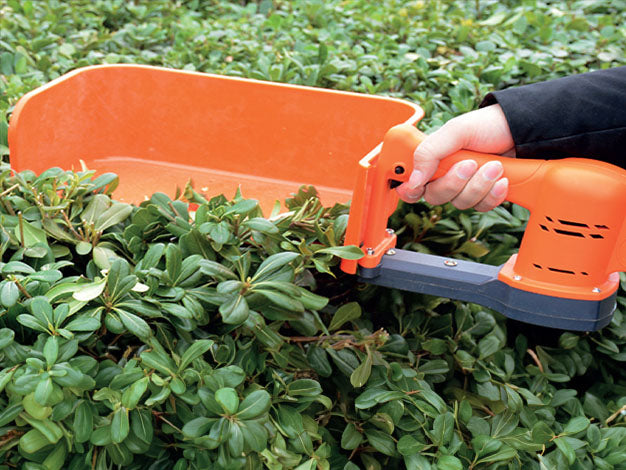
PROS
1/ Harvesting is faster. If you harvest with a big machine, you can harvest 1 hectare per day. It takes 60 to 90 people to harvest the same amount of tea leaves in the same amount of time.
2/ Lower cost.
3/ Bigger and faster production.
CONS
1/ As mentioned before, the leaves are broken, chipped, and incomplete; the old leaves are mixed with impurities.
2/ During the process of making tea, the tea leaves will not release water evenly because the broken places release water first. This results in uneven water release and fermentation, leading to a tea soup color that may not be bright and may have impurities and a bitter flavor.
3/ Due to impurities, such as tea insects, in the tea leaves, the hygiene standard is questionable.
4/ The appearance and size of the finished tea leaves may not be even.




